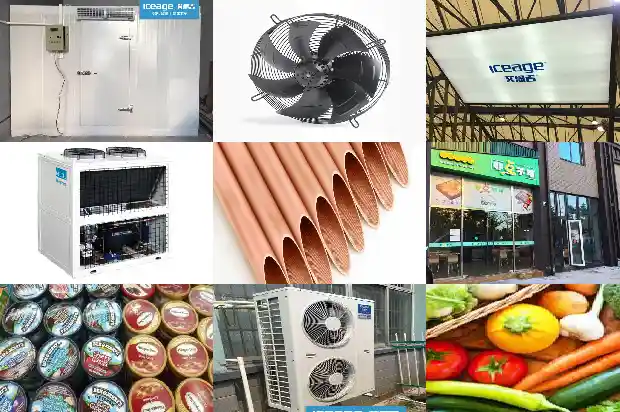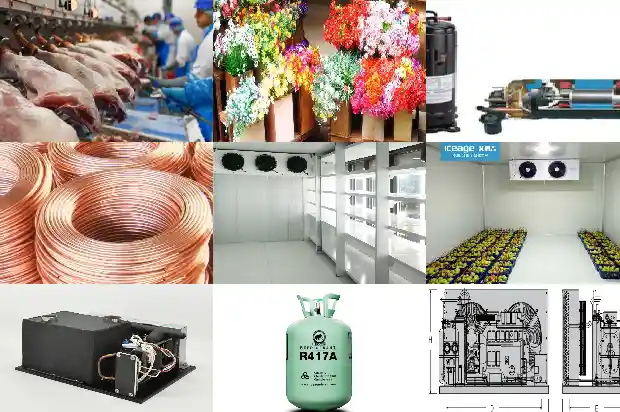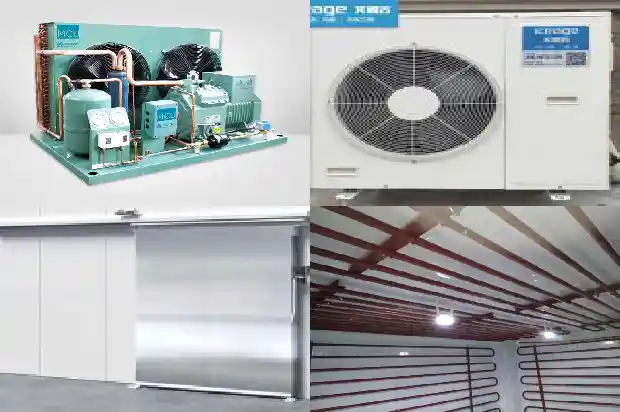Air Conditioning System: Different Water Tanks
2024-09-21
Buffer tank
The buffer tank is actually connected in series in the central air conditioning system to increase the water capacity of the small system, store cooling capacity or heat energy, effectively solve the load fluctuation and frequent starting problems of the host caused by the small system, so as to achieve the purposes of prolonging the service life of equipment and saving energy and electricity.
The buffer tank is actually connected in series in the central air conditioning system to increase the water capacity of the small system, store cooling capacity or heat energy, effectively solve the load fluctuation and frequent starting problems of the host caused by the small system, so as to achieve the purposes of prolonging the service life of equipment and saving energy and electricity.
Expansion tank
In fact, everyone has seen the expansion tank in the project. It is composed of an air bag, a carbon steel tank body and flanges.
This will first compress the nitrogen between the tank body and the air bag, reducing its volume and increasing its pressure. Second, it will increase the accommodation space of the entire water in the system and reduce the system pressure. The water inflow will stop until the system water pressure and the nitrogen pressure between the tank body and the air bag reach a new balance.
When the system water pressure is less than the gas pressure in the expansion tank, the water in the air bag will be squeezed out under the pressure of the nitrogen between the tank body and the air bag and replenished back to the system. The system water volume decreases and the pressure rises. The volume of nitrogen between the tank body and the air bag increases and the pressure drops until the two reach a new balance. The water stops being squeezed back from the air bag to the system. The pressure tank plays a role in regulating system pressure fluctuations.
Due to the regulating function of the air bag, the pressure tank is widely used in the control of small-scale pressure fluctuations in water systems. Pressure tanks are used in hot water and heating systems mainly to eliminate pressure fluctuations caused by changes in water temperature and avoid damage to other system control elements.
We know that expansion tanks are also used in water supply systems. They can eliminate the water hammer effect caused by the opening of water valves and avoid the impact of water hammers, thus achieving the dynamic balance of the system. This is very common in water supply systems. Generally speaking, the maximum working pressure of expansion tanks is eight to ten kilograms, and the size ranges from two liters to one or two hundred liters.
Water expands. Water has the highest density at 4°C. When the temperature is less than 4°C and greater than 4°C, water will expand. When one ton of water is heated from 10°C to 90°C, the volume will increase by about 36.5 liters. If there is no expansion tank, the water will damage other connecting parts. Therefore, the role of the expansion tank cannot be ignored, especially in small systems.
In fact, everyone has seen the expansion tank in the project. It is composed of an air bag, a carbon steel tank body and flanges.

This will first compress the nitrogen between the tank body and the air bag, reducing its volume and increasing its pressure. Second, it will increase the accommodation space of the entire water in the system and reduce the system pressure. The water inflow will stop until the system water pressure and the nitrogen pressure between the tank body and the air bag reach a new balance.
When the system water pressure is less than the gas pressure in the expansion tank, the water in the air bag will be squeezed out under the pressure of the nitrogen between the tank body and the air bag and replenished back to the system. The system water volume decreases and the pressure rises. The volume of nitrogen between the tank body and the air bag increases and the pressure drops until the two reach a new balance. The water stops being squeezed back from the air bag to the system. The pressure tank plays a role in regulating system pressure fluctuations.
Due to the regulating function of the air bag, the pressure tank is widely used in the control of small-scale pressure fluctuations in water systems. Pressure tanks are used in hot water and heating systems mainly to eliminate pressure fluctuations caused by changes in water temperature and avoid damage to other system control elements.
We know that expansion tanks are also used in water supply systems. They can eliminate the water hammer effect caused by the opening of water valves and avoid the impact of water hammers, thus achieving the dynamic balance of the system. This is very common in water supply systems. Generally speaking, the maximum working pressure of expansion tanks is eight to ten kilograms, and the size ranges from two liters to one or two hundred liters.
Water expands. Water has the highest density at 4°C. When the temperature is less than 4°C and greater than 4°C, water will expand. When one ton of water is heated from 10°C to 90°C, the volume will increase by about 36.5 liters. If there is no expansion tank, the water will damage other connecting parts. Therefore, the role of the expansion tank cannot be ignored, especially in small systems.
Energy storage tank
In order to achieve the purpose of energy saving, in small central air conditioners, increasing the water storage capacity of the buffer tank has become an energy storage tank. Generally speaking, there is no essential difference between the energy storage tank, expansion tank and buffer tank.
The difference is only in literal understanding. In actual applications, they have the same uses. The expansion tank is mainly used in small systems. In our large systems, I think the buffer tank and energy storage tank are exactly the same thing.
In addition, let's introduce some more content about the buffer tank:
Under the standard working conditions of air source heat pump heating, the start-stop times of the host (that is, the number of compressor starts) is an important parameter to measure the service life of the host. Similar to the service life of household lamp switches being related to the number of on and off times, adding a buffer tank is equivalent to an increase in system energy storage, stable system temperature changes, and naturally a reduction in the start-stop times of the host, thus prolonging the service life.
In long-term use, it is found that in addition to the above advantages, the buffer tank also extends some unique functions:
In order to achieve the purpose of energy saving, in small central air conditioners, increasing the water storage capacity of the buffer tank has become an energy storage tank. Generally speaking, there is no essential difference between the energy storage tank, expansion tank and buffer tank.
The difference is only in literal understanding. In actual applications, they have the same uses. The expansion tank is mainly used in small systems. In our large systems, I think the buffer tank and energy storage tank are exactly the same thing.
In addition, let's introduce some more content about the buffer tank:
Under the standard working conditions of air source heat pump heating, the start-stop times of the host (that is, the number of compressor starts) is an important parameter to measure the service life of the host. Similar to the service life of household lamp switches being related to the number of on and off times, adding a buffer tank is equivalent to an increase in system energy storage, stable system temperature changes, and naturally a reduction in the start-stop times of the host, thus prolonging the service life.
In long-term use, it is found that in addition to the above advantages, the buffer tank also extends some unique functions:
- Forced automatic exhaust function in the system
If only the function of reducing the start-stop times of the host is required, the buffer tank can be installed in the host outlet water pipeline or the indoor return water pipeline. When the tank is in the system return water pipe, it will be found that the circulating water enters from the upper part of the tank and discharges from the lower part. At this time, the gas in the water will accumulate in the upper space of the tank. The pressure in the closed system will automatically and forcibly discharge the gas from the upper exhaust valve. There will be no situation where we install an exhaust valve on a small-diameter pipe and need to drain a small section of water before discharging the gas, and then a section of water body will be blocked at the lower part, and the exhaust effect is extremely poor. - Protection of the pump, the power component in the water system
The bottom outlet of the buffer tank is connected to the suction port of the pump. The water entering from this suction port is free of gas (the gas cannot come down in the upper part of the tank).
The cavitation phenomenon of the pump impeller will be greatly reduced. The inhaled water is pure water. The water circulated by the pump will naturally push the gas in the system to the system outlet, and then enter the upper water inlet of the buffer tank. The gas brought by the system outlet water will be forcibly discharged by the exhaust valve at the top of the tank, thus forming a virtuous cycle. In a system without a buffer tank, the pump sucks in water containing gas, and the impeller will break the gas and input it into the system, causing gas to exist everywhere in the system, and it is more difficult to exhaust. This causes the flow switch of the pump to frequently alarm and start and stop continuously, greatly increasing the difficulty of debugging.
- Avoiding high-pressure protection of the host
The water entering the host plate heat exchanger is pure (free of gas) water, which can better exchange energy and increase heat exchange efficiency. - Easier debugging and quicker effect at the end
When half of the system is filled with water, debugging can begin. The water flowing into the host and the pump is pure and free of gas, and the heat will be quickly transported to the end, greatly reducing the debugging time. In the early days, the author was engaged in air conditioning construction. When debugging a villa, it could not be completed in less than three to four hours because there was too much gas in the water, and the flow switch frequently alarmed. Insufficient heat exchange of the host would also cause high-pressure protection. After the air coil was blocked, the effect was not obvious. All these greatly extended the debugging time. In a machine room system with a buffer tank, the debugging work can generally be completed in one to two hours. - The system is drained more thoroughly, preventing system blockage and making drainage more convenient
The impurities in the pipeline will accumulate at the bottom of the buffer tank after continuously circulating through a large vertical water tank. The water quality passing through the Y-type filter will be much better, thereby reducing the frequency of cleaning the filter. The sewage outlet of the buffer tank is set at the bottom of the tank and is equipped with a manual sewage valve for more convenient cleaning.
- In winter heating, the system operates more stably
When small air-cooled heat pumps are used in severe winters, the defrosting time is a headache problem for the indoor temperature. If the host is equipped with auxiliary electric heating for assisted defrosting, the cop value of the host will be greatly reduced. After adding a buffer tank, when the host defrosts, the water stored in the tank at a certain temperature can meet the end circulation, completely avoiding the fluctuation of indoor temperature during host defrosting. - After startup, the effect comes faster
Because after the air conditioner is turned on for the first time, the previous cooling capacity or heat energy will be stored in the buffer tank. The insulation standard of the buffer tank is the same as that of the hot water tank (±3°C in 24 hours). So when it is used next time, the effect will naturally come faster. For example in life: turn off the air conditioning host one hour before getting off work. Relying only on the energy of the buffer tank and circulating through the water pump can completely meet our needs until we get off work. The effect is still excellent when we go to work the next day.
Special application chapter:
Due to various reasons, we will also encounter some difficulties in water systems. For example, after the system is completed, it is found that the host seems to be undersized and cannot meet the heat usage at the end.
Suggestion: When transforming, just connect a special buffer tank in series in the return water pipeline.
Due to various reasons, we will also encounter some difficulties in water systems. For example, after the system is completed, it is found that the host seems to be undersized and cannot meet the heat usage at the end.
Suggestion: When transforming, just connect a special buffer tank in series in the return water pipeline.
- Add electric heating to the buffer tank. When the energy is insufficient, supplement a part of the energy through auxiliary electric heating to meet the end use.
- If conditions permit, use a boiler, a flat-plate solar energy, or waste heat energy to supplement energy to the buffer tank (with coil).
- Use a small air-cooled heat pump host and connect it to the increased circulation port of the buffer tank to supplement energy.
The above can also be implemented as an energy-saving scheme for the owner.
The buffer tank needs to be specially produced. Just communicate with the salesperson in advance when placing an order.
The following points need attention:
- If the water tank is connected in series in the system and the inlet and return water diameters are not reasonable, it will cause excessive increase in system resistance.
Suggestion: For buffer tanks ranging from 40 liters to 200 liters, the inlet and return water diameters are DN40; for buffer tanks ranging from 300 liters to 500 liters, the inlet and return water connections are changed to double DN40 inlets and double DN40 outlets. Use double DN40 diameters instead of large diameters. Never make DN50 (the water tank is arc-shaped, the internal stainless steel is generally 1.2-1.5mm, the internal diameter of the water tank is generally 470mm or 600mm. If the interface is too large, the weld seam will have hidden dangers in use and the requirements for installation torque are also very high). - The location of the water replenishment port of the buffer tank should not be too low.
A too low water replenishment port will greatly affect the temperature at the bottom of the water tank and may cause inaccurate sensing of the return water by the host, resulting in unstable system operation. (Because the water sucked in by the return water port of the host is the water at the bottom of the buffer tank. The water replenishment process will cause a large temperature change at the bottom of the water tank.)
Suggestion: The water replenishment port of the buffer tank is near the middle of the tank. - The selection of the buffer tank should be appropriate.
Related Articles
- Influence of Fin Spacing of Evaporator in Air Cooler on Frost Formation
- Air - side Economizer
- Winter Approaches: How to Solve the Low High - pressure Issue of Air - cooled Condensing Units?
- What Are the Common Causes of Cold Air Blower Noise?
- How to Troubleshoot and Repair High - pressure Protection of Air - cooled Units?
- What Exactly Are the Ten Typical Malfunctions of Air Conditioners?
- What Misconceptions Should Be Avoided in Low - temperature Refrigeration System Repairs
- Practical Knowledge on Freeze Protection of Air - conditioning Equipment
- Remember! 3 Steps to Calculate Central Air - conditioner Cooling Capacity
- How to Read the High - and Low - Pressure Gauges of Refrigeration Air - conditioners?
- Analysis of Seven Reasons for Ice Formation in Computer Room Air Conditioners
- Air - conditioner Low - pressure Alarm? These Nine Common Causes
- Selection of Bypass Control Valves for Air - conditioning Water Systems
- Common Faults and Solutions of Central Air - conditioning Chiller Units
- Could a Tiny Copper Tube Cause a Multi - split Air Conditioner to Stop Cooling? Refrigeration Workers Must Pay Attention!
- Maintenance Techniques for Air - conditioning Refrigeration Systems
- Considerations in Selecting Packaged Air Conditioners and Their Heat Recovery Operations
- Characteristics and Differences among Water System, Air System and Refrigerant System
